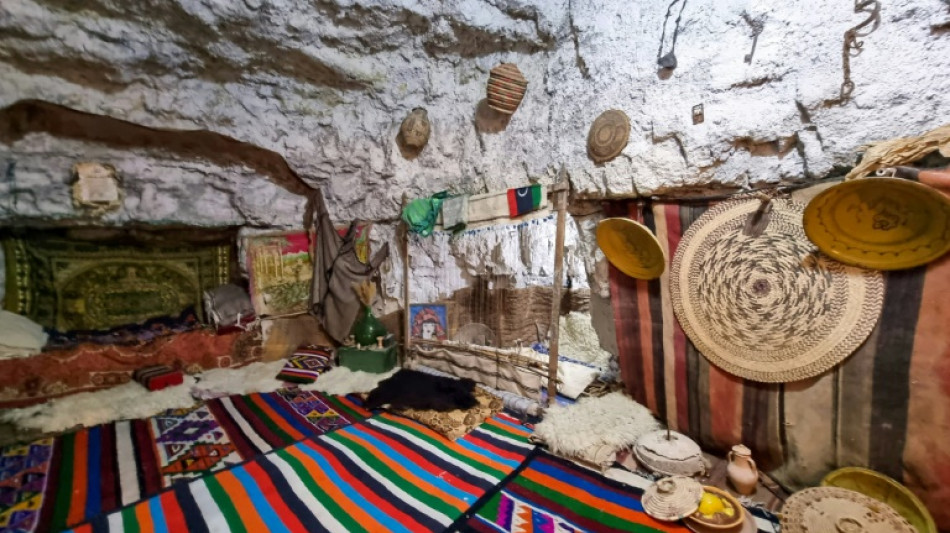
-
 EU scrambles to seal climate deal ahead of COP30
EU scrambles to seal climate deal ahead of COP30
-
New Yorkers expected to pick leftist Mamdani in stunning election

-
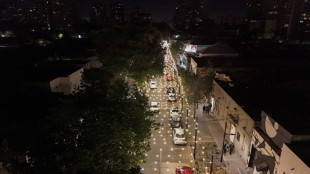 Pining for Pinochet: how crime fanned nostalgia for Chile's dictator
Pining for Pinochet: how crime fanned nostalgia for Chile's dictator
-
Why an Amazon chef said no to a vegan dinner for Prince William event

-
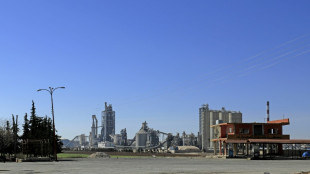 Cement maker Lafarge on trial in France on charges of funding jihadists
Cement maker Lafarge on trial in France on charges of funding jihadists
-
Worker dies after medieval tower partly collapses in Rome
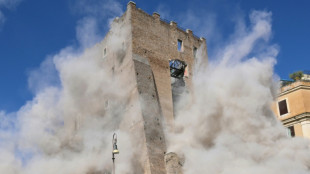
-
 Run-machine Labuschagne in form of his life ahead of Ashes
Run-machine Labuschagne in form of his life ahead of Ashes
-
Prince William plays football, volleyball in Rio on climate trip

-
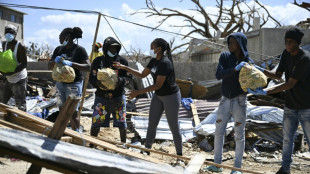 Jamaicans mobilize aid in aftermath of Melissa's wreckage
Jamaicans mobilize aid in aftermath of Melissa's wreckage
-
Starbucks cedes China control to Boyu Capital

-
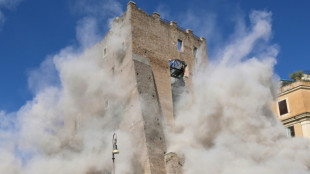 Worker rescued after medieval tower partly collapses in Rome
Worker rescued after medieval tower partly collapses in Rome
-
'Wild at Heart' actress Diane Ladd dies at 89

-
 Xhaka lifts Sunderland into fourth after Everton draw
Xhaka lifts Sunderland into fourth after Everton draw
-
Brazil records biggest annual fall in emissions in 15 years: report
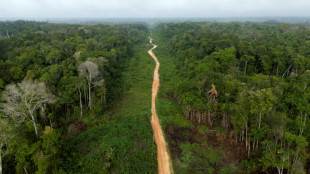
-
 Victor Conte, mastermind of BALCO doping scandal, dead at 75: company
Victor Conte, mastermind of BALCO doping scandal, dead at 75: company
-
Trial opens in 1st US civil case on 2019 Boeing MAX crash
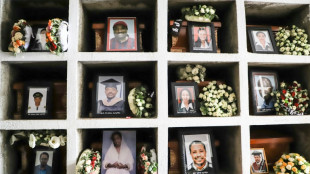
-
 Mixed day for global stocks as market digests latest AI deals
Mixed day for global stocks as market digests latest AI deals
-
Barrett brothers out of All Blacks' clash with Scotland

-
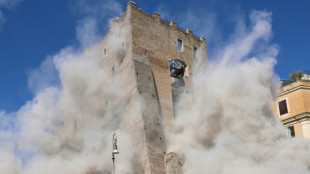 Medieval tower partially collapses in Rome, trapping worker
Medieval tower partially collapses in Rome, trapping worker
-
Arsenal's Arteta says injured Gyokeres out of Slavia Prague tie

-
 Alonso says 'quality' Wirtz helped get him Real Madrid job
Alonso says 'quality' Wirtz helped get him Real Madrid job
-
US Fed's Cook warns inflation to stay 'elevated' next year

-
 Blue heaven: huge crowds salute Los Angeles Dodgers in victory parade
Blue heaven: huge crowds salute Los Angeles Dodgers in victory parade
-
Dutch centrist Jetten clinches election win: final tally

-
 Mamdani extends olive branch to anxious NY business community
Mamdani extends olive branch to anxious NY business community
-
Sierra Leone chimpanzee sanctuary reopens after deforestation protest

-
 Shein bans sex dolls after France outrage over 'childlike' ones
Shein bans sex dolls after France outrage over 'childlike' ones
-
England full-back Steward doubtful for Autumn rugby clash with Fiji

-
 Bayern know how to 'hurt' PSG, says Neuer
Bayern know how to 'hurt' PSG, says Neuer
-
Rybakina downs Swiatek to reach WTA Finals last four

-
 Ex-France international Ben Yedder to stand trial on rape charges
Ex-France international Ben Yedder to stand trial on rape charges
-
Djokovic confirmed for ATP Finals, says Italian federation boss

-
 Trent should be remembered for 'great' Liverpool moments, says Slot
Trent should be remembered for 'great' Liverpool moments, says Slot
-
Stock markets diverge despite boost from AI deals

-
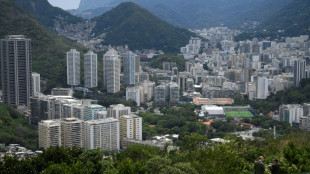 Prince William awed by Rio on climate-focused trip to Brazil
Prince William awed by Rio on climate-focused trip to Brazil
-
Violence in Sudan's El-Fasher could be war crimes, says top court
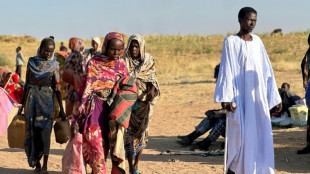
-
 Rybakina downs Swiatek in WTA Finals
Rybakina downs Swiatek in WTA Finals
-
Turkey, Muslim allies say Palestinian self-rule key to Gaza future
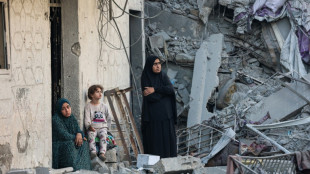
-
 Tens of thousands shelter as typhoon slams into Philippines
Tens of thousands shelter as typhoon slams into Philippines
-
Stock markets rise as tech sector buoyed by fresh AI deal

-
 Vitinha says PSG-Bayern Champions League clash will show who's 'best'
Vitinha says PSG-Bayern Champions League clash will show who's 'best'
-
Arsenal: The unstoppable Premier League force?

-
 Denmark inaugurates rare low-carbon hydrogen plant
Denmark inaugurates rare low-carbon hydrogen plant
-
Springboks back Ntlabakanye call-up despite doping probe

-
 German plans to lower industrial power costs from January
German plans to lower industrial power costs from January
-
Christian, Muslim Nigerians push back on threatened US strikes
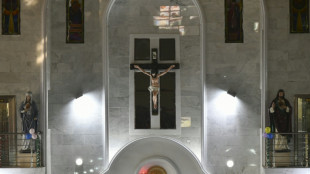
-
 Nigeria's Rivers United paired with African champions Pyramids
Nigeria's Rivers United paired with African champions Pyramids
-
India women cricketers hail new era but challenges remain

-
 'Heroic' worker praised as man charged over UK train stabbings
'Heroic' worker praised as man charged over UK train stabbings
-
Bangladesh ex-PM Zia to contest elections: party
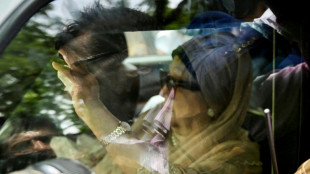
| RBGPF | -3.95% | 76 | $ | |
| CMSD | -0.38% | 23.9 | $ | |
| RYCEF | 1.37% | 15.36 | $ | |
| AZN | -0.83% | 81.72 | $ | |
| SCS | -0.76% | 15.84 | $ | |
| GSK | -1.1% | 46.35 | $ | |
| VOD | -5.89% | 11.38 | $ | |
| RELX | -0.16% | 44.17 | $ | |
| RIO | -1.95% | 70.37 | $ | |
| CMSC | -0.34% | 23.67 | $ | |
| NGG | -0.68% | 74.74 | $ | |
| JRI | -0.14% | 13.88 | $ | |
| BCE | -0.84% | 22.67 | $ | |
| BCC | -3.15% | 68.34 | $ | |
| BTI | 2.38% | 52.44 | $ | |
| BP | -0.75% | 34.87 | $ |

Libya's underground homes wait for tourism revival
Gharyan's unique underground houses were hewn into the mountainside centuries ago, and many lie abandoned, but residents of the Libyan town are hoping tourism can help restore their heritage.
"My great-great-great-great-great-grandfather dug this yard 355 years ago," said Al-Arbi Belhaj, who owns one of the oldest houses in the mixed Berber-Arab town south of Tripoli.
His ancestor would have used a "tajouk" pickaxe to chip away at the ground before loading the rubble into a woven date-palm "gouffa" basket to carry it away, he said.
Dug deep into the arid Nafusa mountains at around 700 metres (2,300 feet) above sea level, the home would have been protected against the scorching summers that bring temperatures up to 45 degrees Celsius (113 Fahrenheit).
It would have also stayed warm throughout the often snowy winters.
The region's bedrock has a consistency that allowed the underground dwelling -- known as a damous -- to last for centuries without collapsing.
Some of the buildings are over 2,300 years old, and ancient Greek historians mentioned their existence, according to historian Youssef al-Khattali.
The area also has burial sites dating back to Phoenician times, he added.
Today, Belhaj says he is the owner of the oldest underground home in Gharyan, a town where many residents have family records and property deeds dating back centuries.
The warren of rooms dug into the rock around the courtyard once housed as many as eight large families, he said.
He was the last person to be born there, in 1967.
In 1990, like many people seeking more comfortable dwellings with running water and electricity, the family moved out of the home, but they kept ownership of it.
Now, Belhaj has renovated it and turned it into a tourist attraction.
- 'Designed to be versatile' -
While late dictator Moamer Kadhafi allowed tourists to visit the country on organised trips, visitors have been thin on the ground since his fall in a 2011 revolt, which sparked a decade of chaos.
But the region's Berber villages have continued to attract domestic tourists, and Belhaj is hoping that a return to relative stability could open the door to more visitors from Europe and elsewhere.
He charges an entry fee equivalent to a dollar for Libyans, or two for foreigners.
While some come for a cup of tea and to explore the building, others stay for lunch or spend the entire day there.
Damous structures were once common across a stretch of western Libya and eastern Tunisia -- the other side of a border only drawn up in 1886.
"The same tribes extend from Nalut to Gabes," said historian Khattali, referring to towns on the Libyan and Tunisian sides.
Their sites were carefully chosen and the buildings painstakingly excavated by hand to avoid them collapsing in the process.
In 1936, they attracted the attention of colonial power Italy, featuring in a tourist guide.
And they were not just used as homes.
"First of all, there were underground dwellings for humans and their animals, then buildings intended as places of worship," Khattali said, referring to synagogues and churches that were mostly later converted to mosques.
Some were also used as defences, he said.
"You can still make out the traces of fortifications in certain parts of the mountain, including the remains of watchtowers."
The buildings "were designed to be versatile, and they've stood the test of time," Khattali said.
"That's why they're so important in the history of Libyan architecture."
D.Sawyer--AMWN



